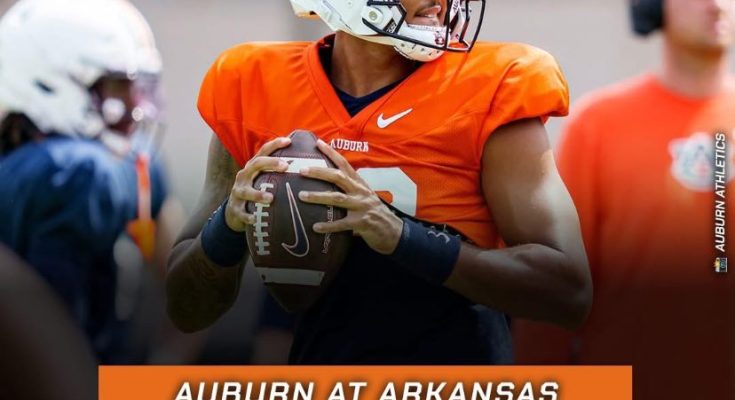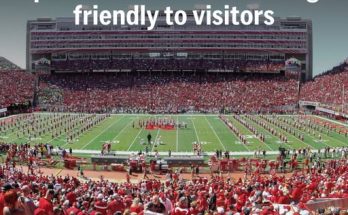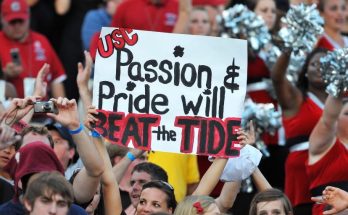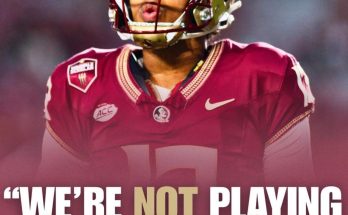Quarterback controversies are nothing new in college football, but the one unfolding at Auburn this season has taken on a particularly intriguing life of its own. Hugh Freeze, now deep into his mission of rebuilding the Tigers into a consistent SEC force, finds himself navigating a familiar yet challenging dilemma — choosing between raw arm talent and steady poise. With Jackson Arnold and Ashton Daniels sharing snaps and spotlight, Auburn’s quarterback carousel has left fans, analysts, and even teammates wondering which direction the Tigers will ultimately commit to. It’s a story not just about two quarterbacks, but about identity, leadership, and the relentless search for stability in one of college football’s most demanding environments.
When Freeze took over Auburn, his vision was clear: develop an offense that could combine explosiveness with precision. The Tigers, long defined by flashes of brilliance but haunted by inconsistency, needed a quarterback who could embody both. For a while, it seemed Jackson Arnold might be that answer. The transfer quarterback, armed with one of the most powerful arms in the conference, brought excitement and promise to The Plains. His ability to stretch the field, make tight-window throws, and operate in an aggressive passing scheme gave Auburn fans a taste of what Freeze’s offense could look like when firing on all cylinders.
Yet for every jaw-dropping throw Arnold has made this season, there’s been an equal number of head-scratching decisions. Turnovers have plagued Auburn’s offensive rhythm, and costly mistakes — like the 89-yard pick-six that shifted momentum in last week’s matchup — have become symbolic of the growing pains that come with trusting talent over experience. Freeze himself admitted after the game that while Arnold’s upside remains undeniable, decision-making and composure under pressure are still works in progress. It’s the kind of double-edged sword that keeps coaches up at night: do you live with the volatility in hopes of tapping into greatness, or do you settle for the steadier hand that might lack the same ceiling?
Enter Ashton Daniels, the poised alternative. The junior signal-caller may not have Arnold’s arm strength or headline-making plays, but what he does bring is control — an understanding of game tempo, situational awareness, and the kind of quiet leadership that can steady a sideline. When Daniels has taken over under center, Auburn’s offense has looked different. The playbook becomes simpler, more methodical, and often more efficient. Daniels leans on short completions, smart reads, and an ability to extend plays with his legs when protection breaks down. In many ways, he represents the opposite end of Auburn’s quarterback spectrum — less flash, more function.
But therein lies the challenge for Freeze and his staff. Daniels’s presence calms the offense but limits its explosive potential. The Tigers’ vertical passing game, so central to Freeze’s offensive philosophy, doesn’t hit the same highs when Daniels is at the helm. Auburn moves the ball, but the big plays that energize both team and crowd often go missing. It’s the classic coaching dilemma: do you value stability or ceiling? Each game, each drive, and sometimes each quarter, Freeze has found himself revisiting that same question.
What complicates the situation even further is the psychological toll that constant rotation can take on a team. Quarterbacks, by nature, thrive on rhythm and confidence. Receivers build timing, linemen adapt to cadence, and offensive play-callers design rhythm-based sequences that depend on continuity. When quarterbacks are swapped in and out, that rhythm is disrupted. Players begin pressing, overthinking, and anticipating changes rather than reacting instinctively. Freeze, to his credit, has been careful not to let the situation spiral into a full-blown locker-room divide. Both Arnold and Daniels have handled the competition with maturity, emphasizing teamwork and collective improvement in interviews. Still, there’s an undeniable sense that Auburn’s offense is living week-to-week, never quite sure who will lead the next crucial drive.
For Freeze, who has built his coaching career on developing quarterbacks — from Bo Wallace at Ole Miss to Malik Willis at Liberty — this year’s challenge cuts to the core of his coaching philosophy. His offense demands precision, timing, and trust between quarterback and coach. When it clicks, it’s beautiful to watch: receivers slicing through zones, play-action setting up deep shots, and the defense constantly off balance. But when timing falters or trust wavers, it becomes a chain reaction of missed opportunities and frustration. That’s where Freeze’s patience and leadership are being tested most.
Behind the scenes, Auburn’s practices have become a constant evaluation ground. Freeze and offensive coordinator Kent Austin have reportedly alternated first-team reps almost evenly, hoping competition will sharpen both quarterbacks. The coaching staff has also adjusted play-calling based on who’s in the game — leaning into Arnold’s arm strength with vertical routes and quick-hitting RPOs, while tailoring Daniels’s drives toward option looks, bootlegs, and shorter passing concepts. Yet even with those adaptations, consistency has remained elusive. One week the offense hums, the next it sputters, leaving the fan base frustrated and restless.
In the broader picture, Auburn’s quarterback carousel reflects the growing pains of a program trying to redefine itself. The Tigers have been chasing stability ever since the days of Cam Newton and Nick Marshall — dynamic playmakers who gave the team both identity and confidence. Since then, Auburn’s offense has cycled through a string of quarterbacks, each promising to be “the guy,” only to run into the same walls of inconsistency. Freeze was hired to break that cycle, and this quarterback battle is his most important test yet.
The SEC, as always, leaves little room for patience. Every misstep is magnified, every interception dissected, every coaching decision second-guessed. Freeze knows that. He also knows that quarterbacks often grow through struggle. Arnold’s mistakes, while painful, may be necessary steps toward long-term growth. Daniels’s steadiness, while comforting, might provide a foundation on which to build a sustainable offense. The ultimate goal isn’t just to win the next game — it’s to create a culture where Auburn’s offense can trust its identity, regardless of who’s under center.
That’s what makes this situation so fascinating. It’s not simply a question of who throws the better spiral or runs the faster forty. It’s about leadership, confidence, and the intangible ability to make a team believe. Freeze has hinted in recent press conferences that he values both players for different reasons. “Jackson’s got all the tools,” he said. “He can make every throw on the field. But there’s more to playing quarterback than arm strength. It’s about seeing the field, feeling the game, managing situations. Ashton brings a calmness that helps everyone around him. The challenge is finding that balance.”
If Auburn can find that balance, the payoff could be significant. The Tigers’ defense has shown flashes of being SEC-ready, and the offensive line, though still developing, has improved its protection schemes. The missing piece is cohesion at quarterback — the kind that allows Freeze to open up his full playbook and dictate the game on his terms. Until then, Auburn remains a team with potential but without a true identity. One week, they look like a top-15 offense ready to challenge the SEC elite; the next, they’re stuck in neutral, undone by turnovers and inconsistency.
The road ahead won’t get easier. Auburn’s remaining schedule features some of the SEC’s toughest defenses — teams that feast on uncertainty. Freeze’s decision, whether to stick with Arnold’s upside or lean into Daniels’s reliability, could define not just the rest of this season but the trajectory of his tenure at Auburn. Stability at quarterback is the foundation of any program’s success, and right now, Auburn is still pouring the concrete.
In truth, there may not be a perfect solution. Arnold and Daniels each bring something Auburn needs, but neither has yet proven capable of sustaining it over four quarters against elite competition. Perhaps the long-term answer lies in developing Arnold’s decision-making while allowing Daniels to guide the team through high-pressure moments. Or perhaps Freeze will have to make a hard choice — to pick one, live with the consequences, and let the chips fall where they may.
For Auburn fans, this season has been a lesson in patience, frustration, and cautious optimism. They’ve seen glimpses of what could be — explosive plays, smart drives, moments when everything finally clicks. But they’ve also seen the cost of instability. As Freeze continues to search for his quarterback cornerstone, one thing remains certain: the future of Auburn football will be defined by how this battle resolves. Will Freeze’s gamble on raw talent pay off, or will steady leadership win the day?
In college football, every great program eventually finds its quarterback — the one who fits the system, leads the locker room, and turns potential into production. For Hugh Freeze and Auburn, that search is still ongoing. The carousel keeps spinning, and every snap, every drive, every throw brings them closer to an answer. Whether that answer is Jackson Arnold’s rocket arm or Ashton Daniels’s unshakable poise remains to be seen. But one thing is clear: until Auburn finds stability under center, its journey back to SEC prominence will remain a work in progress.



